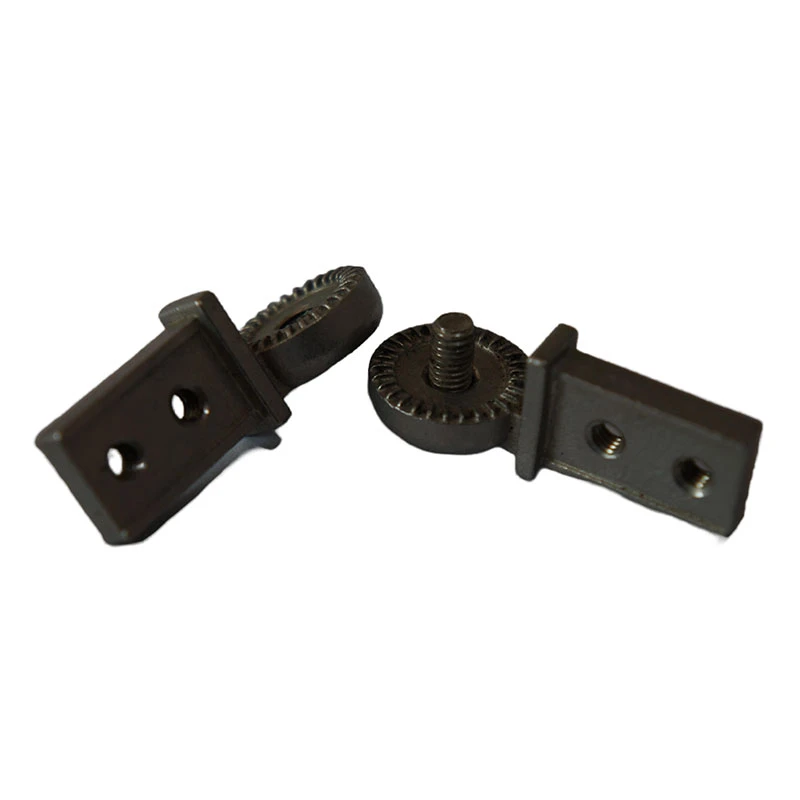grey cast iron sand casting
Grey Cast Iron Sand Casting An Overview
Grey cast iron is one of the most commonly used materials in the foundry industry, particularly favored for its excellent castability, good wear resistance, and reasonable tensile strength. This alloy of iron, carbon, and silicon gets its name from the grey color of the fractured surface, which is due to the presence of flake graphite. One of the primary manufacturing methods used to create grey cast iron products is sand casting. This article highlights the process, benefits, and applications of grey cast iron sand casting.
The Sand Casting Process
The sand casting process involves several key steps. First, a mold is created from a mixture of sand and a binding agent. The mold is designed to form the desired shape of the final product. Once the mold is prepared, the molten grey cast iron is poured into it. This iron is typically heated to temperatures exceeding 1,400 degrees Celsius to ensure it is fluid enough to fill every nook and cranny of the mold.
After the molten iron has cooled and solidified, the mold is broken away to reveal the casting. This method allows for the creation of complex shapes and sizes, which makes it highly versatile. Sand casting is also suitable for both small and large production runs, providing flexibility for manufacturers.
Benefits of Grey Cast Iron
Grey cast iron offers several advantages that make it a preferred material in numerous applications. Its thermal conductivity is high, which means it can withstand rapid temperature changes, making it ideal for engine blocks and exhaust manifolds. The flake graphite structure not only contributes to its machinability but also enhances its damping capacity, which is critical in automotive and industrial applications where noise reduction is essential.
grey cast iron sand casting

Another significant benefit of grey cast iron is its cost-effectiveness. The sand casting process can be less expensive than other casting methods, such as investment casting, especially for large parts. Additionally, sand can be reused multiple times, reducing waste and overall production costs.
Applications of Grey Cast Iron Sand Casting
The applications of grey cast iron sand casting are diverse. Industries ranging from automotive to construction extensively use grey cast iron for manufacturing components like engine blocks, cylinder heads, pump housings, and machine bases. The strength and durability of grey cast iron make it an optimal choice for heavy machinery and structural components that require longevity and resistance to wear.
In the artistic realm, grey cast iron sand casting is sometimes utilized to create intricate sculptures and architectural elements. The ability to produce fine details and textured surfaces allows artists to explore creative possibilities with this material.
Conclusion
In conclusion, grey cast iron sand casting is a highly effective manufacturing process that capitalizes on the unique properties of grey cast iron. The combination of excellent castability, good mechanical properties, and cost efficiency makes it a popular choice across various industries. As technology advances, the sand casting process continues to evolve, integrating improvements that enhance quality and reduce environmental impacts. With its proven track record, grey cast iron sand casting is likely to remain a foundational manufacturing technique for years to come.
-
Technocrats Die Casting Solutions – Precision Hot & Cold Chamber Die Casting ExpertsNewsJun.24,2025
-
Precision Glass Machining Solutions Sand Casting Glass & Abrasive Water Jet Machining ExpertsNewsJun.24,2025
-
Top Extras Casting Solutions Die Casting and Sand Casting Experts High-Quality Casting and Die Casting ServicesNewsJun.10,2025
-
Top SS Casting Manufacturer Aluminum Die Casting Manufacturer China Precision Die Casting Company SupplierNewsJun.10,2025
-
High-Quality Brass Casting Sand for Precision Sand Casting Brass at HomeNewsJun.10,2025
-
Affordable Aluminum Sand Casting Solutions Custom PartsNewsJun.09,2025















